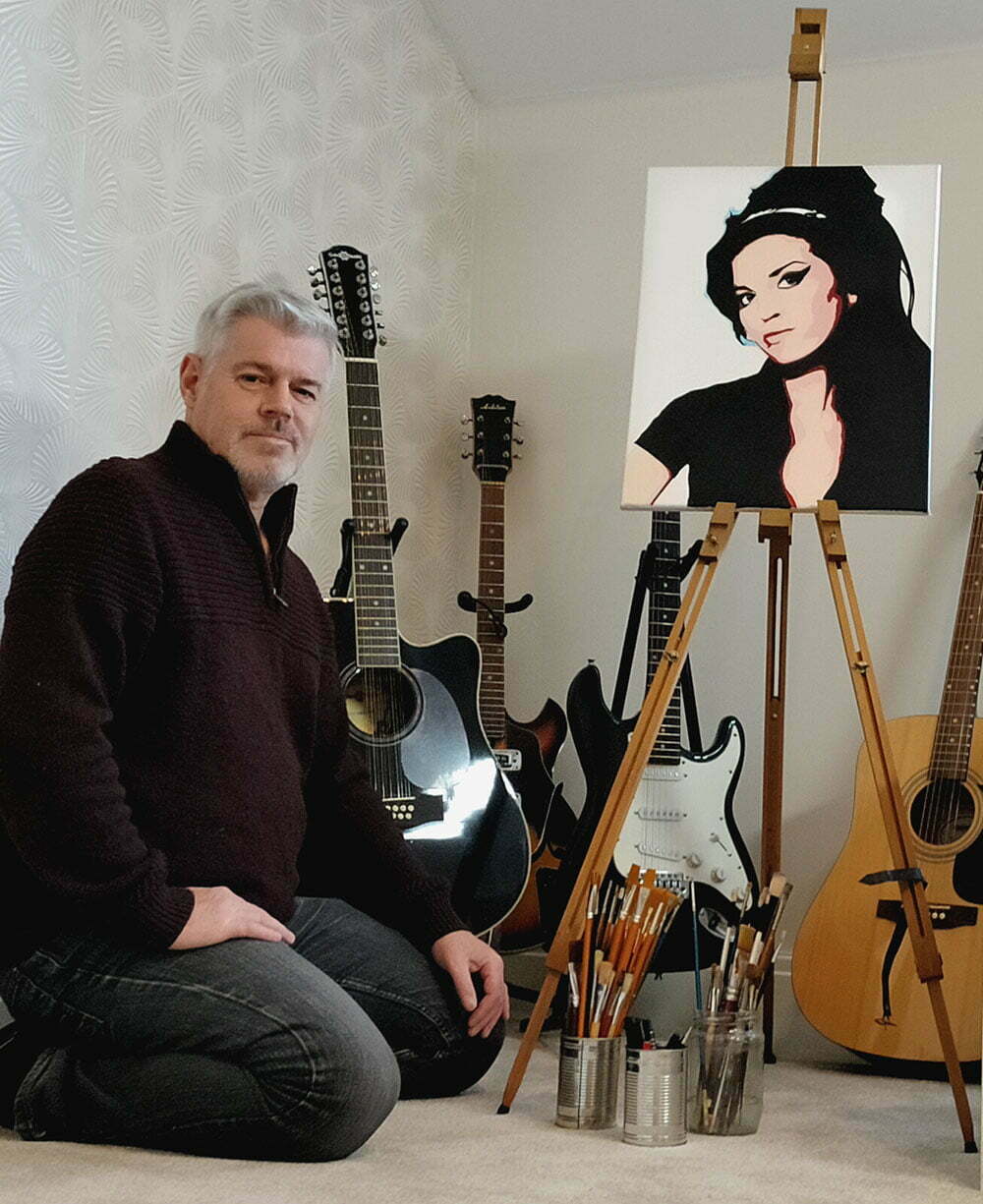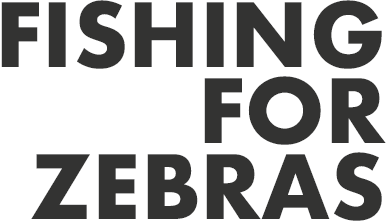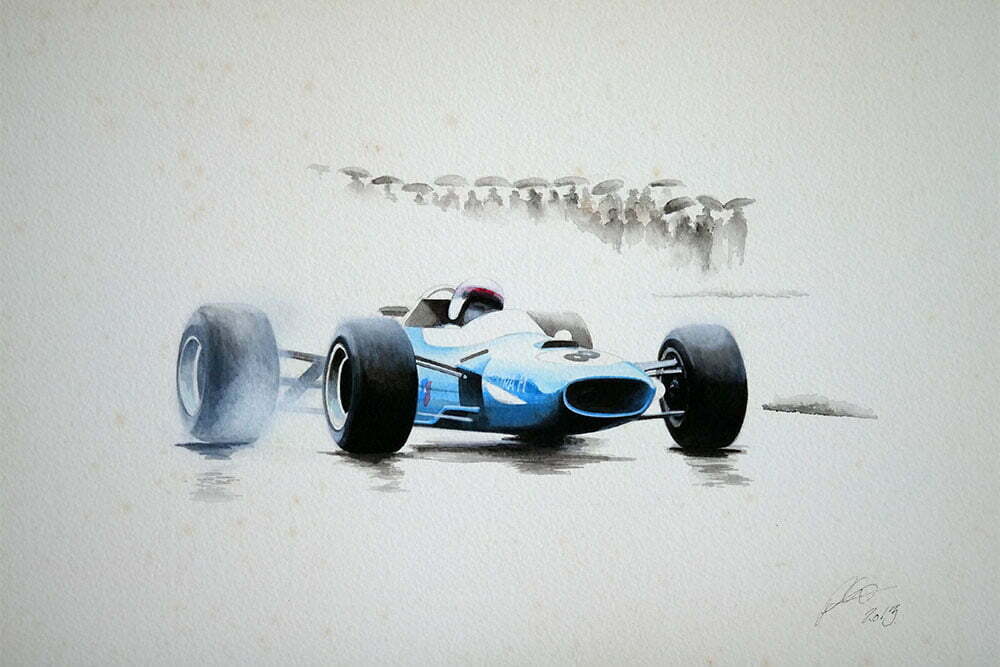Meet the Artist
Fishing for Zebras is Paul, who lives in the Chichester area of West Sussex, near the Goodwood Estate, home to the famous motor circuit, annual vintage event Revival and the petrol heads’ favourite, The Festival of Speed. As a motor sport enthusiast it’s a further bonus that Rolls Royce are based here too.
Paul says…
“I called Birmingham home for 20 years. Looking back, the education system left an awful lot to be desired (it was the 70’s). Coupled with record high unemployment, prospects were bleak. However not all bad. For someone in their late teens/early twenties it was also a very dynamic place during the mid 70’s and early 80’s.”
The kids ruled
“The music industry was undergoing massive transformations. It was a hot bed of constant and rapid change, fashion and diversity – historically a unique period of old and new emerging music genres all living side by side. The kids ruled. I don’t think that will ever be repeated. The sounds of the time are still the best, by far (in my opinion).
During those years, apart from listening to music, I would spend many hours drawing, designing hot rods and sports cars when I should have been doing something far more productive, according to some. I did technical drawings, suspension layouts, custom car and body styles, and studied custom painting techniques and tricks. I pursued it with a passion. I needed to have a greater, broader understanding of what worked. Custom car and motor shows, books, magazines – you name it, I went for it. I had never found drawing difficult. It was just something I could do. (‘I should do something with it… there could be potential here.’)”
Art school or poly?
“I was already proficient with a pencil. I also had a reasonably decent understanding of mechanics, so I wasn’t bad with a spanner either. Art school or poly here we come.
However, despite my hopes, I didn’t to go to art school or a college. I was found a job in a high street shop which was considered far more important, and that was that.
That was 1979. I ventured south in the early 80’s and have remained here ever since.
Most recently, I was an LPG engineer with some 18 years experience on the front line. Previous to that, I’d done a number of occupations, mainly mechanics with some 15 to 20 years spent in the motor trade, including extensive classic car restoration. I still held the passion for drawing, mainly sports including historic and classic racing cars. Tastes change…”

Graphic design and illustration
“It was during the late 90’s I took a decision to leave a decent classic car restoration job to embark on a HND course in graphic design and illustration. I had this long-term annoying itch I needed to scratch.
I was very interested in album cover art, posters, pieces which included typography. Even greetings cards. Up until then I’d done all my lettering by hand, so I also really wanted look into this relativity new digital way of designing.
I’ve been lucky enough not to have found illustration a difficult thing. It has never been a struggle. It’s a talent, an ability, that I have taken for granted. It’s been pushed aside, overlooked and ignored on too many occasions throughout my life.
And I fully understand it is something that not everyone can do.”
Can anyone draw?
“Yes, I firmly believe it can be taught.
With the right teacher, anything can be taught. Once a thing is understood, explained and clearly demonstrated – and with a little patience – anyone can learn. If they really want to…
I have never received any training. I’m totally self-taught.
It was not until I was into my late thirties, doing my HND, I received any formal training and that was predominately for the graphic design side of things. My drawing and illustration abilities were very well polished by that point. I was quick, precise and detailed. I have always been able to visualise the finished work before I started to work on it.”
Aesthetics
“Having the background in mechanics helps when I produce the automotive paintings. I usually tend to paint them on the move, on the limits of adhesion. The suspension reaction and a sensation of speed and movement.
I drew lots of other subjects too. Boats, aircraft, science fiction art, buildings, portraits… the list goes on. I’ve studied numerous artists, styles and techniques, including auto-styling and concepts using felt tip pens and pastels. However, one thing remained quietly consistent. “Aesthetics”. Aesthetics played a key role in all what I was doing without even realising it, and long before I’d heard of the word. (Some would say it’s a word for expensive taste.)”
3D and industrial design presents itself
“From the classic Coke bottle, to the sofa we sit on, the petrol pump we use and the latest slick super car, every manmade item we see, touch and use across the entire planet has been designed. Usually according to trends, tastes, fashions, the limits of tech and, not forgetting the biggest deciding factor of all, cost.
Some become classics (a rare thing these days), some are dull, boring and uninspiring. And some are absolutely woeful.
But that’s a question of individual taste. Of which there is absolutely no accounting for.”
Avant-garde design – the scope is limitless
“The decision to study industrial design as part of my HND was never going to be in doubt.
It was utterly inspiring. Amongst others I studied Bauhaus and Terrance Conran, the founder of Habitat. And in particular, a French gentleman by the name of Raymond Loewy. An absolute legend in his field.
I discovered a fascinating and exciting world of style. Avant-garde design. The scope is limitless.
The question is a simple one. Do good looks sell?
The general rules of thumb are that form follows function. Less is more. Keep it clean and simple and don’t design for design’s sake.
Example. Two coffee cups. They hold the same amount of coffee, they both have handles. But one is a little more stylish than the other, better looking, a better finish. So which one would you buy? That depends on what you want them for, who’s buying.
Let’s not overlook that cost factor either. As we know, quality usually has a price. (Expensive tastes again, a talking point for another time.)”
Good old fashioned hand craft skills
“This was for me. I was born to it. A natural. I had an eye for the aesthetically pleasing, Importantly, I was very aware of a product’s commercial limitations, not forgetting its prime function. I was able to turn out thumbnail sketches of a restyled, remodelled everyday items quickly and easily. Nothing seemed too difficult. I was able to produce physical 3D prototype models using the many craft skills I’d learnt along the way – cardboard point of sale displays, packaging presentation as well as metal fabrication. Plaster of Paris casting, using fibreglass resins, auto body fillers, spray painting and a flat and polish to finish. The good old Letraset transfers came in handy too. No 3D printers here, just good old fashioned hand craft skills and sheer know how.
The pieces were a hit. Receiving high praise from those in the know, admired for their design concepts, high level of finish and quality. Placed under spotlights in display cases. Exhibited as exceptional examples of industrial design from the original concept to the finished prototype. Complete with the layout pads and working drawings, they made an attractive exhibit and good advertising for the college.”
Life gets in the way
“Unfortunately, That’s as far as that went. Circumstances intervened. Again.
The usual problem – money.
I wasn’t able to continue the studies and move on to the BA and a Masters degree.
I had a roof to keep over my head. The HND had taken two years of full-time work. An expensive hobby.
I had to get a job. Sadly, no one was hiring industrial designers without a university degree.
So now, years later… Here’s what I know.”
Illustration
“For the purpose of illustration, that depends wholly on the idea. You could be a fabulous artist. But if the idea is poor, you’re on a road to nowhere.
A great idea will always stand out more than the actual illustration. Combine a great idea with a great illustration… you’re in business.”
Graphics
“What does the customer require? Based on that, what can be created for the customer to make their requirements visually standout and deliver the all important message? Back to the ideas again.
Time to use these skills. So now I’m talking:
- Book illustrations
- Greetings cards
- Comic art and cartoons
- One-off customer commissions
- Paintings for commercial print runs
The car paintings we’ve covered. Pop icons and the cartoons…”
Pop icons
“The pop icons tend to speak for themselves. When it comes to style these guys are in a league of their own, absolute true giants of their art. As a music nut, especially of the 70’s and 80’s vintage, I couldn’t possibly ignore them.
I had to do something as a homage to these legends. There is plenty more scope here too. I’ve an extensive list of candidates of who is next. And that’s not forgetting icons of the silver screen either. Watch this space.”
The cartoons
“I’ve always been a huge fan of a Messrs. Laurel & Hardy, a certain Road Runner and a chap who drew some amazing cartoons for the Daily Express newspaper.
For me, the secret is in the facial expression. This is something I’ve worked on for years – all sorts of characters, everyday folk from all walks of life. Some extremely simple, no more than a handful of lines, some more detailed.
The facial expression is often the joke. It confirms the gag, cements the punch line. The remainder of the illustration are the props on which the gag is constructed: frustration, anger, sarcasm, pain, joy, bewilderment. All very achievable with just a couple of well placed squiggles.
Providing you know how to do the squiggles, that is.
I enjoy doing them. And to some, an absolute favourite. The beauty of cartoons is that no one is exempt. The pen is truly mightier than the sword.”
Know your subjects
“There are countless artists, designers and creatives types in the world today. Many of them of exceptional quality and skilled in their respected fields.
I know I’ve currently more than one string to my bow, that’s deliberate. I’m also very aware of my own limitations. I know which commissions to take on and which pass over.
I never stop learning as the learning curve will always there regardless of what I do. The subjects I cover I know well; I’m both familiar and comfortable with them.
I’ve been doing this for over fifty years. And there is no rule against having more than one portfolio. This is mine, this is Fishing for Zebras.”
- Book illustrations
- Greetings cards
- Comic art and cartoons
- One off customer commissions: pop icons, motor sport, oils, acrylics, watercolours
- Paintings for commercial print runs: motor sport, oils, acrylics, watercolours
Have an art commission?
See the Artwork page for examples of work to date, and contact Paul if you have an enquiry or commission.


